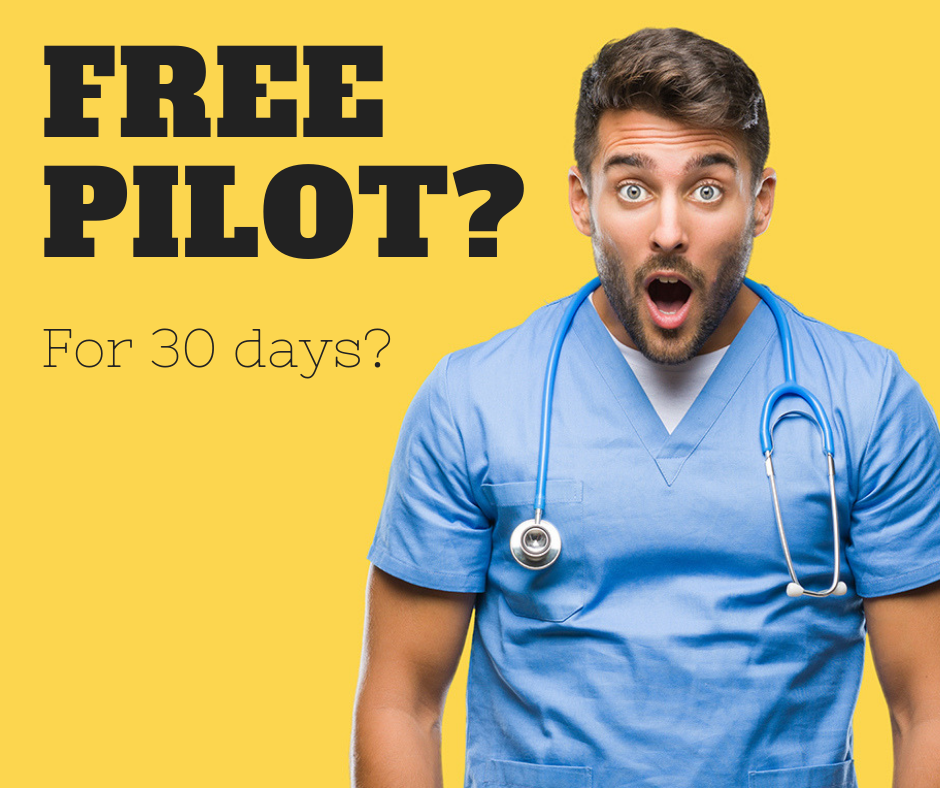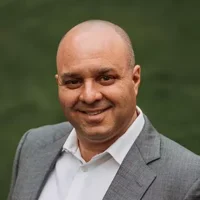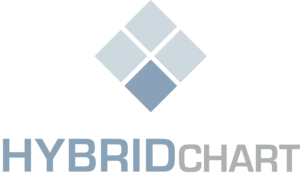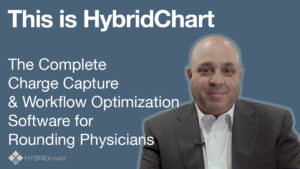I remember the days when writing “Agree with above” in the paper chart was enough to satisfy the clinical documentation gods. Those were simpler times.
A modern clinical practice has become more complicated – not just with documentation requirements. Demands on medical providers who are caring for an aging population have increased exponentially. Balancing office hours, hospital rounds, and the electronic circus surrounding all of it can sometimes be overwhelming.
Modern challenges call for modern solutions.
Adopting a mobile charge capture solution will change your world, redirecting your efforts back to patient care, while assuring that your operation is air-tight from a revenue cycle management perspective.
At its core is the charge capture itself, namely the ability to easy create a medical financial transaction: date of service, diagnoses, CPT codes. In an ideal situation, this should be done on a mobile device (such as a smartphone or tablet) at the point of care. And this transaction should ideally appear in your practice’s billing software where your team can scrub the charges and ensure they are properly submitted as a claim. Having safeguards against missed charges is critical. There is nothing more disheartening than doing the work and then forgetting to bill for it. Or losing the billing slips. Ouch.
Now, you may be thinking, ‘If it ain’t broke, don’t fix it,’ but this is not about a broken process. It’s about a better process. Trust me, this is a better process. Invest in the method upstream and it will translate into hours saved downstream.
Using a good charge capture system that understands physician workflow will minimize provider data entry requirements. A small investment to get the patient “into the system” now gives you the power to avoid the time consuming and painful tasks of a paper system.
If you are seeing a patient using those cute little cue cards with a patient sticker on them to document your hospital work, how is your partner who takes over for you supposed to use the data on that card? He or she can’t. Your partners need their own card, their own sticker, and they need to write down their own diagnoses. Then you have to march those cards to a bin or bucket or wherever your clunky paper system mandates that you deposit your cue cards so that the biller can try to decipher your scribbles. Now let’s add up the time you spend signing out to each other. Now let’s factor in the constant phone calls from the billers reminding you to “hand in your charges, pretty please.”
All of this time and effort to avoid spending eight seconds entering patient information into your charge capture app? Really?
In my world, most of the patients get entered into my charge capture system by my office staff. They are the ones getting the call about the hospital consult in the first place. And the patient only needs to be entered once. Occasionally, I am at a restaurant with my wife and I get a call from the answering service about a new consult for tomorrow, but I just quickly add them to the system, and then get back to date night.
Diagnoses get added once and can be used by anyone else seeing that patient during the hospital stay. Why should everyone have to duplicate work? When I enter the charge, which also takes under ten seconds, I know the charge is in. No phone calls from my billers – they have it the second I press the button. And guess what? My partners can see that I have seen the patient. No need for a text message, or even worse, digging through the chart to see if there is a note from me.
What about the facesheet?
Good question. Every practice is different. Some have a system where the first provider who does the consult is responsible for grabbing a facesheet and getting it to the billers. Some billers have access to the hospital EHR and get the demographic and insurance information needed that way. My app gives me the ability to take a picture of the facesheet with my phone, upload it securely, and make it viewable to my billers instantly.
What becomes possible with this type of workflow solution is true collaboration. The cloud-based census gives my whole team visibility of the patient caseload. There is also the ability to assign patients to providers, which helps organize everyone. Charges get entered, and no charges are missed. Billers can avoid manual data entry which we all know leads to errors and costs money.
Using a mobile charge capture system removes all the risk exposure of a paper system. There are countless potential HIPAA violations if you have private patient information neatly folded into stacks of paper, which can get lost or forgotten on a table at the coffee shop. Topline revenue tends to go up because, inevitably, charges get missed with a paper system – even by those who claim to have a meticulous system.
Open the door to a modern system and modern workflow. Get all the financial and efficiency benefits. Discover the ability to run analytics and gather your own data. Given that medicine is going full-speed towards a value-based compensation system, you may want to have your own data.
Change is hard, especially for medical providers. Recognize that front-loading effort to generate benefit is not the same as adding more work for the doctor. Try a mobile charge capture solution. You will wonder how you ever lived without one.
Discover EVOLVE by HybridChart now.
Our newest and most powerful version is called HybridChart EVOLVE. Take control of your entire workflow using a user-friendly solution created by a physician. Medical software too often fails to address the specific needs of providers. Rounding at one or more hospitals presents a unique challenge. There is the need for effective team collaboration and easy charge capture. Census management means true collaboration among provider and staff. Rounding at multiple facilities just got way easier. Covering on-call now has the luxury of essential information for clean hand-offs. Charge capture takes less than five seconds. Diagnoses are easy to find and follow the patient. Customized charge menus make it easy to enter the correct charge. Don’t let billing for your work slow you down. Charge in real-time and focus on caring for the patient.
HybridChart has numerous levels of safeguards against missed charges. The Charge Checker feature will scan every day of an admission and assure there are charges. Using the Charge Matrix you have visibility of all charges from multiple providers per day for any given patient.
Most practices see a revenue increase of 8-10% after using HybridChart – attributed to capturing every charge for every patient. Charges are complex enough with just the diagnosis codes and charge codes. To make your charges accurate HybridChart allows you to easily adjust the Date of Service and assign Secondary Billers such as nurse-practitioners and physician assistants. Modifiers can be built into specific Billing Modules or choose from a customized list managed by your practice. Seamlessly navigate our Charge Capture workflow and save time without losing accuracy.
An automated charge capture system may be the most profitable investment that you can make into your practice today.
You can instantly boost your revenue by 10% using our modern, high-tech and easy to implement charge capture system.
Dr. Gregory Sanders is a practicing Cardiologist and the CEO/Founder of HybridChart based in Scottsdale, Arizona. Visit HybridChart at www.hybridchart.com
Smarter Rounding and Workflow Software for Doctors
At HybridChart, we provide technology that connects your healthcare team, increases efficiencies, AND improves your bottom line. HybridChart’s cloud-based software adapts to your practice’s unique workflow and will improve your profitability and patient outcomes by utilizing our 5 features: census management, charge capture, secure messaging, discharge management, and data analytics.
NEVER miss another charge and get PAID for the work you do!








